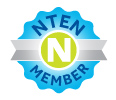Britt Bravo and the NetSquared crew have a cool idea... pose a question and a cool background report from the Overbrook Foundation and get people to pontificate ;) The better idea in this is that anyone can pontificate, further proof that the audience often has far more interesting things to say than the speaker. Go to the site and answer for yourself!
What is needed to facilitate more nonprofits' adoption of the social web?
A clear value proposition and simple, achievable models.
This approach pre-supposes there are few innovators and far more followers. To achieve volume (i.e. more nonprofits) you need to "comdify" the social web.
The first angle is always a why question. Given the choice between calling a donor or filling out a grant proposal, why am I going to invest my time in the social web? An answer that is always good is an ROI answer. Do happy, engaged constituents give more money? Are their demographics more desirable than my regular donor pool? Does the cost effort I invest today to figure this all out exceed the benefit I may get?
So to answer the why question, I would love to see a 2 page case for why the social web helped the
Overbrook grantees that were in the vanguard. Drop the academic analysis we are sometimes too fond of in our sector and make a clear case designed to sell the reader.
Now that we have nonprofits sold on the social web, we need to give them achievable models.
I find it interesting that in the Overbrook report, it seemed like no one had to be sold on the social web:
“I think I’m missing something really big, but I don’t know what it is or how to find out what it is.”
“We don’t know who can translate these things for our needs.”
In our sector, we seem to want to answer these questions by teaching the organization how to write an RFP. Because somehow, it makes sense that a human rights organization needs to be an expert in the social web to be able to use the social web... to write an RFP, select a consultant or 'do it themselves.'
The Overbrook report also notes "There was almost universal frustration voiced about using outside technology consultants." Why?
Probably because the human rights organization wanted some sausage and really didn't want to know how the sausage was made. Why can't we as nonprofit technology assistance providers deliver a satisfying outcome rather than a frustrating process?
So this leads us to the second point... where are the social web "products"? I'm a nonprofit and I just buy, off the shelf, a solution. I don't have to become an expert. I just reap the rewards.
(Easy to say, FAR harder to do... but that is for another post)


